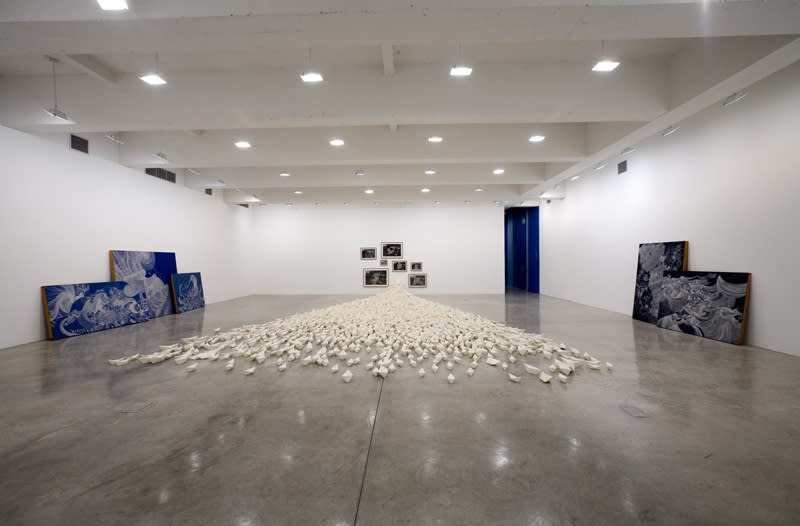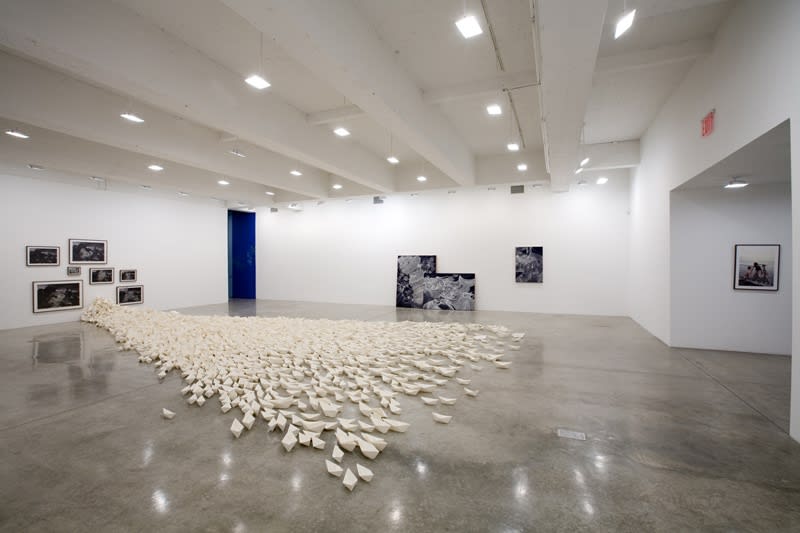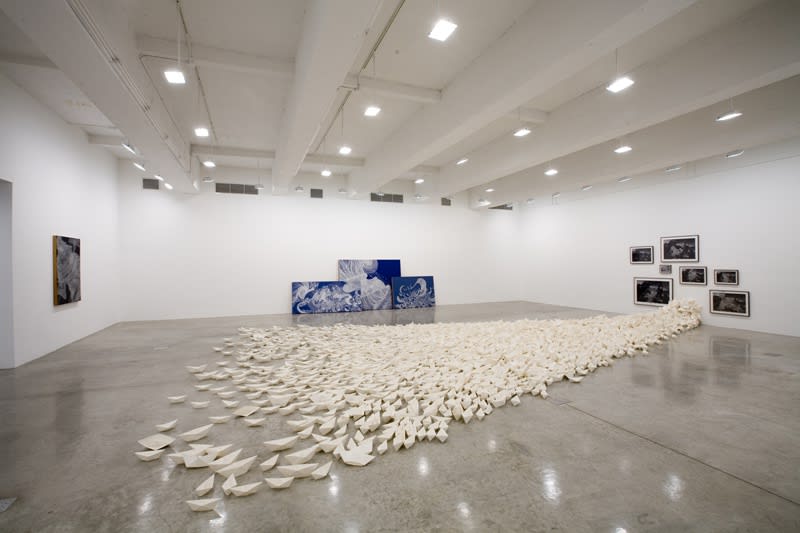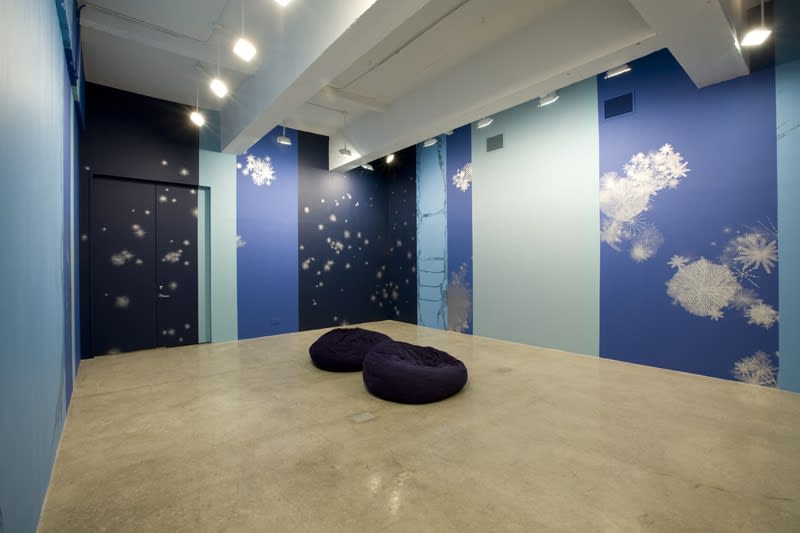Sandra Cinto: The difficult journey - after Géricault: Tanya Bonakdar Gallery, New York
Tanya Bonakdar Gallery is very pleased to present The difficult journey- after Géricault, Sandra Cinto’s fourth solo exhibition with the gallery. Installed in the ground floor space and comprised of photography, sculpture, painting, and drawing, the show is conceived as an epic in three parts, presenting a visual narrative of birth and origin, journey and difficulty, and finally the potential of solace and redemption. Taking Théodore Géricault’s "The Raft of Medusa" as a point of departure, Cinto's delicate sculptural installation, intricate drawings, and large scale wall works transform the gallery into an immersive environment that hovers between dream, myth and reality.
As Cinto has done in previous exhibitions, The difficult journey- after Géricault divides the exhibition space sequentially, using the existing architecture to help her narrative unfold. Paying homage to the hopefulness of beginnings, Cinto opens the exhibition with a vintage photograph from the 1970s that depicts a mother wading in the ocean with her children. Guiding the little boy and girl through the shallow waves, she helps them to execute their first "difficult journey," a small yet formative lesson in navigating the waters of life.
While symbolic of origin and birth in this photograph, the ocean turns menacing in the main exhibition space as thousands of folded paper boats flow toward a grouping of prints of Géricault's "Raft of Medusa." Considered one of the first overtly political works of art, "The Raft of Medusa" critiques the incompetence of an unqualified captain—a poor leader who allowed his ship to sink. Covering the reproductions of this iconic painting with her signature drawings— silver ink unfurling in webs of arrows, daggers, ladders, feathers and wings—Cinto deftly combines Classical, Romantic and Surrealist imagery to critique the shipwreck of contemporary society. The seven reproductions of Géricault's painting symbolize the earth’s seven seas, yet they also evoke the innumerable human odysseys that these oceans have sustained, as well as the hardships suffered by those who have sought a better life on “the other side.” For a society in which issues of immigration are of pressing concern, the paper boats piled at the gallery’s rear wall and fanning out over the gallery floor poignantly foreground the fragility of humanity in such endeavors; the miniature vessels struggle with the impenetrable wall without breaking through, all surging toward the same point—a perceived passageway that is closed.
All installation images above: Photo by Fabian Bergfield





